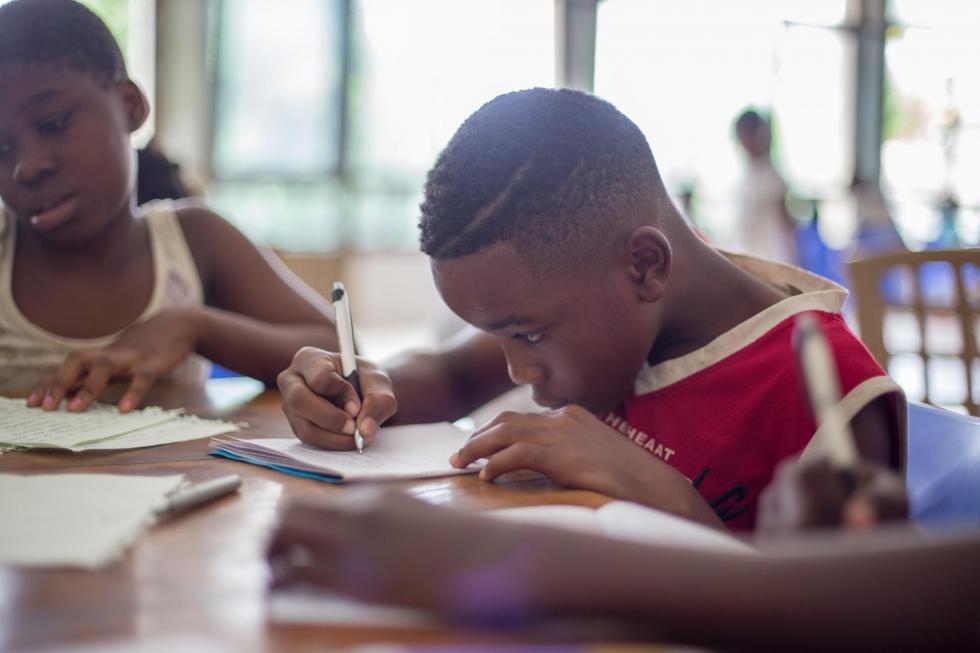Distance Learning for Rural Schools During Extended School Closures
 As we move further into the
COVID-19 crisis, rural schools across the U.S. are struggling
with how to continue students’ learning amid school closures. In
recent weeks, SREB instruction coaches have been collaborating
with educators in our region on how to deliver learning
virtually, and we’ve learned about the specific challenges rural
schools are facing.
As we move further into the
COVID-19 crisis, rural schools across the U.S. are struggling
with how to continue students’ learning amid school closures. In
recent weeks, SREB instruction coaches have been collaborating
with educators in our region on how to deliver learning
virtually, and we’ve learned about the specific challenges rural
schools are facing.
Moving completely to e-learning is not feasible in many rural districts. Many students do not have access to the Internet at home. And even if they did, many of them do not have access to laptops or tablets for completing online assignments. This has prompted some districts to create packets of stapled notes and assignments that parents picked up as the school closures began.
But as the closures stretch into more missed weeks of school,
some leaders in these rural districts are questioning the
practicability of printing hundreds, if not thousands, of packets
for students. The time and cost of such an endeavor adds up
quickly. What can rural school districts do in these
circumstances?
District and School Leaders
-
Encourage your team to stay safe and focus on what’s
important. The physical safety of your staff, students
and community are more important than anything else during this
time. Follow all CDC
and state government guidelines. Remember, too, that the
emotional care of your team is important. Sending personal
emails to your staff shows you care about their well-being.
Encourage your teachers to email, call or write every child at
least once to check on them.
-
Be consistent about learning expectations and
structures across schools and grades as possible. This
will greatly help your teachers who teach multiple grade
levels. It will also help parents who might have students in
different schools. Be consistent in structures like how much
student work will be graded, what online platform teachers will
use to assign work and what days and times parents can pick up
packets.
- Keep equity in mind. Since not all students have Internet access, establish structures for providing each student with access to learning materials. This might include teachers posting assignments online, printing some packets, emailing assignments and calling students to provide assignments over the phone. Consider delivering new packets and collecting completed packets when you deliver food to students. You might also consider asking local grocery stores if they will post flyers that detail for parents how to access student assignments.
Teachers
-
Check on your students. Email, call or write
personal letters to each student. Ask them how they are doing
emotionally and physically. Don’t just ask if they have
completed p. 17 in the packet you sent home. Some of your
students might be struggling emotionally with the school
closures. Knowing you care about them will go a long in
solidifying your relationship with them.
-
Lean on and encourage each other. You are not
alone. This pandemic has affected us all. As teachers, you are
accustomed to being around a lot of people. Our current
isolation can be very lonely. Reach out to each other through
texts and phone calls. Talk about life, not just about school.
Spread joy and hope.
-
Make a plan and collaborate. If there are
other teachers in your school who teach the same grade, help
each other design assignments. If you are a singleton,
collaborate with teachers in other grades or content areas in
your school. This is a great opportunity for vertical planning.
Use the same structures for assignments. For example, use the
same online platforms or set up your packets the same way with
notes then assignments. Talk about content.
-
Plan for quality learning experiences even if the
assignments are a review of previous content. It might
be easy to regress to old ways of teaching through
drill-and-skill assignments. But quality teaching — whether in
person or from a distance — deepens students’ thinking and
builds their problem-solving skills. Use assignments like
journal writing about the school closures and at-home science
experiments. Use online platforms like Google Hangouts to hold
virtual class. If students do not have Internet access, use
FreeConferenceCall.com to teach small groups of students over
the phone.
- Choose to find the silver lining — you might have more time to plan for next year. Regardless of when you go back to school, some students will have fallen behind in their learning. Start planning now for how you will address students’ gaps in knowledge next fall. Collaborate with teachers in your district or neighboring districts. Include time in the first few weeks to build relationships with students and establish routines.
We believe collaboration is a critical component of an effective education system. If you want to collaborate with other rural districts on solutions for addressing learning during this time, please contact us. We can help connect you to other districts within your state or outside of your state.
Special thanks to the following amazing educators for offering their ideas for this blog and encouragement to each other.
- Teresa Cannon, teacher, Talbot County School District, GA
- Cortney Diddle, teacher, Chattahoochee County Schools, GA
- Maci Hess, teacher, Taylor County Schools, GA
- Vachon Hunter, teacher, Stewart County School District, GA
- Hope Philips, resource teacher, Columbus Regional Mathematics Collaborative, Columbus State University, GA
- Laura Stokes, resource teacher, Columbus Regional Mathematics Collaborative, Columbus State University, GA
- Sarah Inman, school improvement instructional coach, SREB

